The Last Frontier. On the Green Island, the convoy regiment stood to death
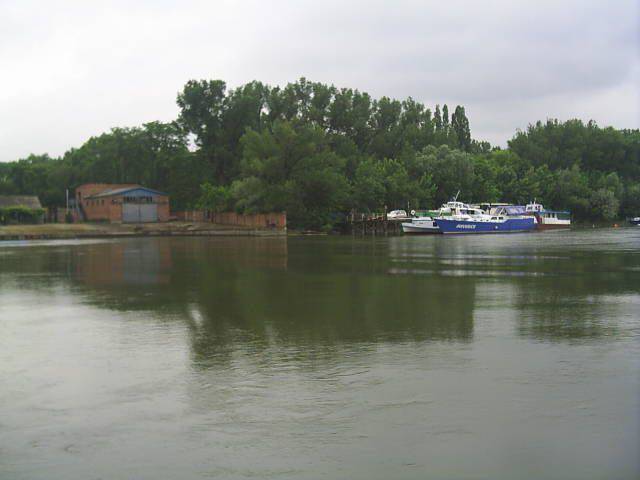
Glorious way 230-th regiment
The 230 th regiment of the NKVD convoy troops was formed in 1939 year on the basis of the 14 th separate Rostov convoy battalion. Although in fact the history of the regiment goes to the hard years of the Civil. Then, in March, 1920, in Rostov-on-Don, a team was formed to combat banditry and looting, which included all 25 fighters. Then, on the basis of the team, a battalion of NKVD troops was formed. The tasks of protecting a growing number of prisoners and camps in the city, ensuring public order demanded that the People’s Commissariat of Internal Affairs should consolidate the existing convoy battalion and create a regiment based on it. The 230 regiment was tasked with not only protecting and escorting prisoners, but also protecting important state facilities and public order. Rostov-on-Don, as a regional center, needed such a unit, and the regiment soldiers honorably carried out their uneasy duties. At the same time, the regimental units underwent "battle run-in" outside the Rostov region. Thus, the regiment participated in the protection of the state border of the Soviet Union, its military personnel took part in the Soviet-Finnish war 1939-1940. By June 1941, the 230 th regiment of the convoy troops of the NKVD of the USSR was part of the 43 brigade of the convoy troops of the NKVD of the USSR.
When the Great Patriotic War began, most of the regimental servicemen were sent to the front. Two hundred people under the command of the regiment commander, Lieutenant Colonel Shevtsov were sent to the front, 249 fighters joined the fighter battalion. Contrary to the anti-Soviet stamps, the soldiers of the NKVD troops were not "snickering the wardens" sitting in the rear. Most of the soldiers and officers of the same convoy troops experienced all the "charms" of the trenches, all the dashingness of the attacks and the severity of the defeats. After sending two hundred fighters headed by the commander of the regiment to the front, the command of the regiment was taken over by Lieutenant Colonel Pavel Petrovich Demin - later Major General. The battalion commissar Fedor Vasilievich Shkolnikov was the deputy commander of the regiment for political affairs, and Captain Isaev was the chief of staff of the regiment. In addition to the command of the regiment, for two days Pavel Petrovich Demin also served as the head of the formation of another division, the 33 of the motorized rifle regiment of the operational forces of the NKVD of the USSR.
33-th regiment in the battles for Taganrog and Rostov
In accordance with the Organizational Deployment Scheme of the NKVD operational forces of the USSR for wartime, on June 22, 1941, in connection with the beginning of mobilization, the 230rd motorized rifle regiment of the NKVD operational forces was formed on the basis of the 33th regiment of convoy troops of the NKVD of the USSR. At first, the duties of the regiment commander were performed by the commander of the 230th regiment of the convoy troops of the NKVD of the USSR, Lieutenant Colonel Pavel Petrovich Demin. In the period from June 23 to 27, 1941. the formation of the personnel of the 33rd motorized rifle regiment of the operational troops of the NKVD of the USSR. On June 26, 1941, Lieutenant Colonel Ivan Tikhonovich Zubrilov was appointed commander of the regiment, battalion commissar Pavel Trofimovich Kochanov was appointed military commissar of the regiment, and senior lieutenant Efim Grigoryevich Shelestyuk was appointed chief of staff of the regiment. Most of the staff of the regiment was staffed by the call of the storekeepers from the Rostov region. The regiment included a communications company, a business company, a musical platoon, a special platoon, an automobile company, tank company, three rifle battalions, two artillery batteries. The number of the regiment amounted to 2254 troops. It is significant that the military-technical and transport equipment of the regiment, despite its operational formation, was at a high level. So, the regiment had 220 units of automotive equipment.
After taking the oath and the training course, a large part of the regimental servicemen, numbering about a thousand people, was aimed at providing an important state assignment for the deportation of persons of German nationality from the territory of Rostov and Stalingrad regions, Krasnodar Territory. Today, deportation looks like an act of discrimination against Soviet Germans on a national basis, but the harsh conditions of the war years did not leave the Soviet leadership any other choice. In the end, and in the same United States, which like to cite as an example domestic “human rights advocates”, a mass deportation of the Japanese was organized. Meanwhile, on September 19, in Rostov-on-Don, a combined detachment of 1941 troops was formed from the remaining soldiers and officers of the auxiliary units of the regiment. It consisted of two machine-gun and one rifle company, an artillery battery and parts of the rear and control. The commander of the detachment was appointed Major Orekhov, the Commissioner - the senior political officer of Paradise. Three weeks after the formation, October 624 9, the squad was sent to the front. The regiment's servicemen, who had become part of the combined detachment, were to meet the enemy in the environs of Mariupol of the Stalin Region of the Ukrainian SSR and restrain his attacks until the arrival of the main forces of the 1941-th separate army.
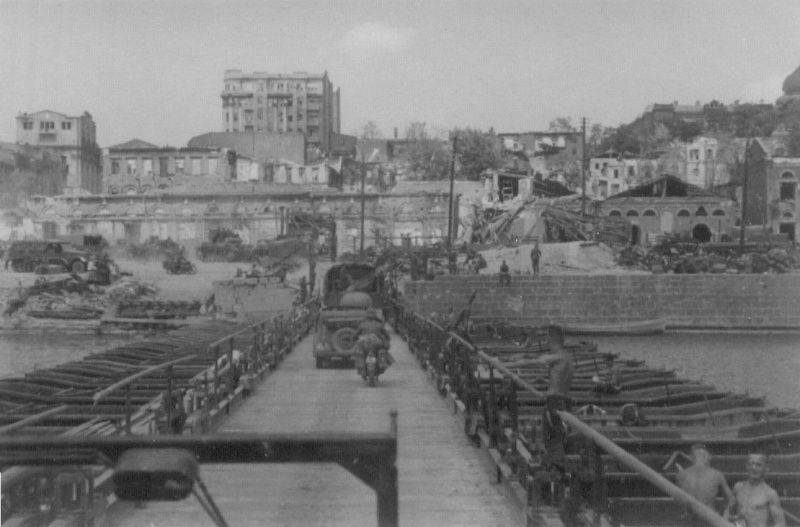
October 10 in 4.00 units of the Consolidated Detachment on 62 trucks and cars moved towards the village Fedorovka. In the vicinity of Fedorovka, the soldiers of the reconnaissance squad commanded by political instructor Pyatak made their feat. In the battle, Pyatak himself was wounded twice, which did not prevent him from commanding his subordinates who beat off the Nazi attacks. Later, the rest of the detachment joined the battle with the enemy. Despite the fact that the Nazis maintained their attacks with strong artillery fire, the KGB warriors did not lose ground. October 16 squad was thrown to the defense of Taganrog, but during the movement was in the ring of enemy troops. The soldiers of the detachment of the NKVD went on a breakthrough environment. A fierce night battle ensued, out of which only three vehicles managed to escape, one of which was the commander of the detachment, Major Orekhov. The next day, on October 17, the detachment reunited with the main forces of the 33 regiment, returning from the deportation mission. Now, the main goal of the regiment was to guard and defend the ferries across the Don River, the bridge over the River Temernik (a tributary of the Don River flowing through the territory of Rostov-on-Don) and the Rostov-Gora railway station (now there is no this station in its place is a residential area of Komsomolskaya Square).
Warriors of the NKVD in the battles for Rostov
In the second half of November, 1941, the Nazis and their allies approached Rostov-on-Don. The units of the Red Army and the troops of the NKVD were given the task of defending the “gates of the Caucasus”. The 230 th convoy regiment was charged with covering the northwestern approaches to Rostov from the left bank of the Temernik river and the Quarry camp (now the Kamenka microdistrict of the Oktyabrsky district of Rostov-on-Don). November 6 regiment took defensive positions on the direction of Red Chaltyr - Quarry - Red Garden City. After 13 days, 19 in November, when the Germans had already come close to Rostov, the regiment was redeployed to the area of the settlements of Zapadny, the Red Garden City and Nizhne-Gnilovskaya. The eastern outskirts of Rostov were also covered by the 2 th battalion of the convoy regiment. Platoon ml. Lieutenant D. Serikov entered the battle with the enemy in Kiziterinovskoy gully (Kyzyterinka is one of the Don tributaries, a tiny rivulet is practically a stream).
The 33 th regiment of the NKVD was sent to the defense of the Nizhne-Gnilovskaya, Budennovskaya and Kirovsk crossings, which it carried out on 20 and 21 in November. On the night of 20 on 21 in November, the regimental units engaged in street battles with Hitler units that broke through into Rostov-on-Don. At the railway bridge over the Don a platoon under the command of Junior Lieutenant Bylchenko joined the battle with the enemy. The unit entered hand-to-hand combat with the Nazis, managing to turn them to flight. For the fascists, the battle with the platoon Bilchenko ended with the loss of twenty-eight soldiers and two officers. Street fighting on the territory of Rostov is an immortal feat of the Soviet soldiers from the 33 regiment of the NKVD. Many of them showed not only fearlessness, but also remarkable resourcefulness. Thus, the Red Army soldier Denisenko, who served as a driver in the regiment, conducted aimed fire at the enemy from a Polish-made captured 37-mm gun. The paradox was that Denisenko had no experience of service as an artilleryman, but in a critical situation he was able to deal with the weapon, orient and open fire on the enemy, creating a serious obstacle to the passage of enemy tanks along Budennovsky Avenue. In the battles for Rostov in November 1941, the soldiers of the regiment destroyed 800 enemy soldiers and officers. But the regiment itself suffered serious losses. The battles of the regiment 220 did not return from the battles.
The 230 th regiment of the NKVD held a defense near the village of Frunze, the chemical plant, at the end of Nakhichevan. During the battles for Nakhichevan, the fighters managed to destroy up to sixty German soldiers. 21 November, the Nazis still managed to occupy Rostov-on-Don. Part of the 56-th separate army hastily retreated to the left bank of the Don. Covering their withdrawal had to KGB soldiers from the 33 and 230 regiments of the NKVD troops and yesterday’s civilians from the Rostov Infantry Regiment of the People’s Militia.
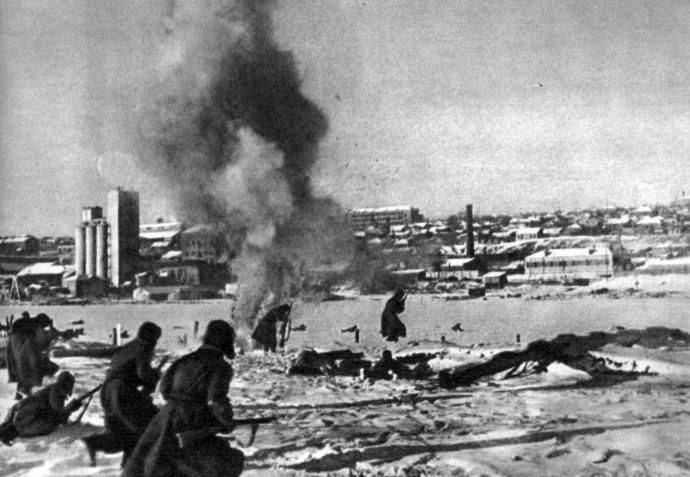
Fight for Green Island
In these terrible days, in addition to participating in battles with the Nazis, the soldiers of the convoy regiment had to perform the tasks of daily service. So, on November 20, the 3 battalion of the regiment provided for the evacuation of the Rostov prison (the famous Bogatyan Central) to the Bataysk distributor and the command of the 56 Army before the units covering the main forces, was assigned the task of retaining the Green Island, the most important springboard on the Don River, which had strategic importance for the defense of positions on the left bank. Green Island had to defend the soldiers of the 230-th regiment of escort troops. On 6.30 in the morning of 21 in November 1941, the battalion crossing of the Nakhchivan channel began, separating the island from Rostov-on-Don (more precisely, from Nakhichevan). While the units were crossing the canal, the Nazis carried out continuous shelling of the crossing. On the 29 line - Nakhichevan Street, which rested against the crossing to Green Island, units of five Soviet divisions retreated. The departure of the regular troops was provided by a few units of the convoy regiment.
The soldiers and officers of the 2 battalion of the 230 regiment participated all night in street battles in Rostov-on-Don, and now they had to cover the retreat of the main forces of the Soviet troops. Units of the 347 th Infantry Division were transferred across the canal. The battalion of the convoy regiment covered their withdrawal. The reconnaissance company of the regiment entered the battle with the enemy, who volunteered to ensure the transfer of the divisions and the main units of the convoy battalion to the island. All the fighters who ensured the withdrawal of subunits fell to the death of the brave in battles at the crossing to Green Island. The main part of the battalion was able to cross over and take up positions on the island.
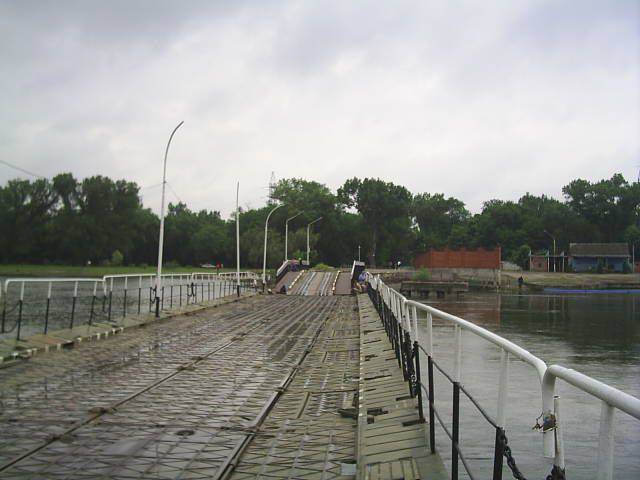
Right on the heels of the Soviet units were moving German tanks. His defenders did not have time to blow up the crossing to Green Island. For six hours, the warriors of the 230 convoy regiment fought a brave battle against the enemy forces that were many times better and better equipped. In the armament of the convoy regiment were only two machine guns, small weapon and hand grenades. The DZOT, commanded by Sergeant Zanin, first opened fire on the enemy. The first shots from a machine gun killed about ten German soldiers. According to DZOTU opened fire. The machine-gunner Vasilenko managed to pull out the commander sergeant Zanin, but he himself was killed by a shard. The platoon, commanded by Lieutenant Boris Galushko, managed to stop the advance of German tanks on Green Island. Private Ogarkov with a bunch of grenades pretended to be killed and let a tank close to him, after which he got up and threw grenades at him. The wrecked tank stopped, other Hitler tanks also stopped. The Chekists kept the defense of the island, not having anti-tank guns. Nevertheless, the personnel of the regiment showed the highest courage and excellent training. Thus, the sniper Sagaydakov killed the driver of a German tank with a well-aimed shot, hitting the viewing slot. But the tanks continued to advance. In battle, 80 people died - the third part, and so battered in the battles of the regiment, most of whose soldiers had long gone to the front.
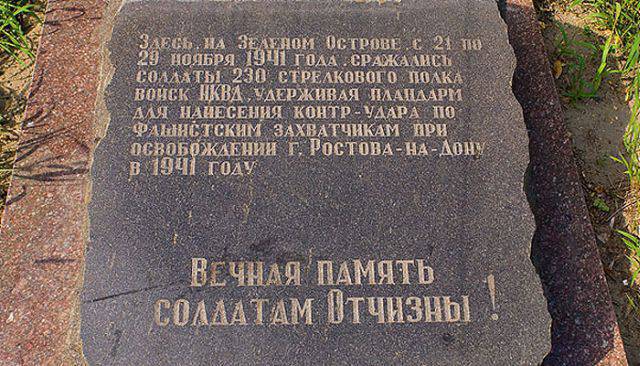
The commanders of the regiment’s units, which were entrenched on the island, understood that it could not last so long - in the end, the Germans would be able to take the island with tanks and artillery. Therefore, the only way out was to call the fire of Soviet artillery, which took up positions on the left bank of the Don, on itself. Large-caliber guns hit the Germans advancing on the island. Fearing that explosions would destroy the crossing and the tanks would be trapped on the island, the Germans began hastily turning their combat vehicles back and retreating from the island. In the end, the Soviet gunners managed to get into the crossing and drown it along with the enemy tank that was on it. Then the assault hit the positions of the 230th regiment aviation Luftwaffe. The land of the Green Island, not so long ago delighting the Rostovites who had a rest on it, turned into a real hell. Under continuous shelling of the enemy, Soviet orderlies collected wounded and shell-shocked fighters, dragged them across the ice on the nets from beds and boards across the Don - to the left bank, in Bataisk, where Soviet field hospitals were deployed.
At night, the surviving soldiers and officers of the 2 battalion of the 230 regiment of the NKVD convoy finally retreated to the left bank of the Don. Their withdrawal was covered by a reconnaissance platoon and several volunteer machine gunners. In the combat positions of the soldiers of the 2 battalion, the fresh companies of the regiment and the armor-piercing platoon from the 31 rifle division changed. The reconnaissance fighters, dressed in white camouflage suits, managed to cross to the right bank of the Don - to Nakhichevan, captured by the Nazis, where in hand-to-hand combat, without using firearms, destroyed the calculations of German mortars and captured the officer commanding them. For several nights, the scouts of the 230 regiment made similar raids on enemy positions. They destroyed the enemy firing points, ammunition depots. In turn, the Wehrmacht round the clock attempted to take the Green Island. Artillery and enemy aircraft bombarded the island, and the infantry repeatedly tried to cross to Green. But each time the attacks of the Nazis choked, faced with the fearless resistance of the soldiers of the regiment.
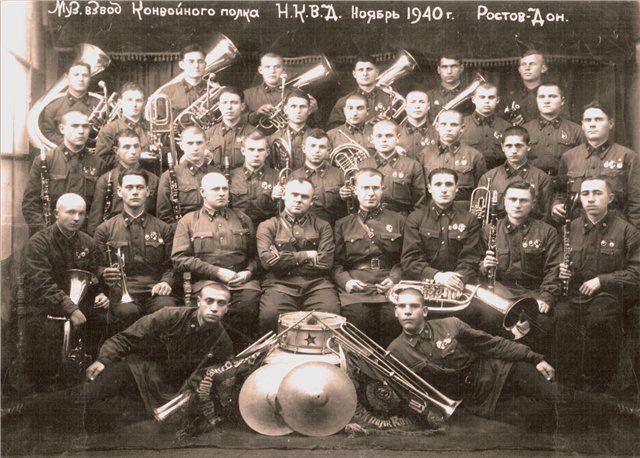
Auxiliary parts of the regiment took part in the defense of Green Island. They had to take up arms and beat regimental musicians, signalers and orderlies to the enemy. The Rostov citizen Karl Filippovich Pchemyan was called up for service in the 230 th regiment of the NKVD convoy troops in the 1940 year. He served as a horn player in the regiment's musical platoon, but when the order came to defend Green Island and then beat back Rostov, occupied by the enemy, quickly retrained as a machine gunner. And, I must say, with a machine gun, a musician hit the enemy no less accurately than he played the horn. “The brave were reckless. Two grenades per person, a Tokarev self-loading rifle and 60 cartridges for it - this was the basic set of weapons. November 1941 was very frosty, strong ice was established on the Don. Our guys came up with a ride on a sled to the right bank, where the Nazis stood to throw grenades at them. But the enemy all the time launched lighting flares. If you notice - the end. We had a guy, Ivan Bondarenko, a sturdy gym. He took a bunch of grenades under his arm and crawled on the ice. Suddenly a stray bullet hit a bunch of grenades, and it exploded. The guy, probably, didn’t have time to understand anything, as he ended up in the other world, ”recalled Karl Filippovich Pchemyan (quoted from: Smyslenko O. Machine gun and French horn // Official Growth. 7 (1002), 12.02.2014).
Release at any cost
At the cost of great losses, the soldiers of the 230 regiment of the NKVD convoy troops succeeded on 21 in November 1941 of the year to defend the territory of the Green Island. Five days later, on November 26, the 56 Army began an offensive against Rostov-on-Don. However, KGB warriors entered the battle much earlier than the general offensive. On November 24, the divisions of the 230 regiment were tasked to form a reinforced battalion and, having crossed the Nakhichevan Canal, to occupy a bridgehead on the south-eastern outskirts of Rostov-on-Don. The command of the operation was assigned to the battalion of Senior Lieutenant Golushko, who was given a rifle and machine-gun company. November 26 battalion moved to the starting position. The battalion 1-i company rushed into the south-eastern outskirts of Nakhichevan, the 2-I company also overcame the Don and left for the city. 3-I company began crossing, but was discovered by the enemy. The Germans opened fire on the third company from their artillery guns. In the current situation, the commander of the 347 th Infantry Division, which was operatively subordinate to the 230 th regiment of convoy troops, ordered the cancellation of the offensive. Under the heavy fire of the enemy, the Golushko battalion retreated to its initial positions. In this battle, the battalion suffered serious losses. Only the second echelon was able to depart. The first echelon, which consisted of 1-I and 2-I companies and machine gun platoon, was surrounded and entered into street battles with the Nazis. Occupying separate houses and buildings, the soldiers and officers of two companies engaged in small battles with the motorized infantry and tank units of the fascists.
On November 25, the 1 Battalion of the 230 Regiment was concentrated on Green Island, and the next day the reconnaissance group Lieutenant G.M. Sviridov crossed the Don River and seized a bridgehead in the Theater Square. In the area of Karl Marx Square, in the center of Nakhichevan, a second reconnaissance group appeared. Both reconnaissance groups managed to hold bridgeheads until the main units of the Soviet troops approached. During the day the KGB kept the defense of the bridgeheads. During this time, the platoon of senior sergeant Georgy Makarevich managed to destroy in battle one hundred and fifty Nazis, two enemy guns, several cars, and seize several houses on the 37 line. The platoon of elder Pavel Gubin succeeded in destroying an entire company of the Nazis, entering into an unequal battle with her and winning the battle. The company under the command of Lieutenant Nikolai Levkin managed to fortify itself in the area of Karl Marx Square, and the commander himself received a concussion from a grenade explosion and lost sight, but remained in the ranks and continued to command his fighters. The soldiers of the junior lieutenant Danila Serikov took up positions at the Krasny Aksai plant at the bottom of Nakhichevan, also joining the battle with the German units.
On the night of 28 on 29 in November, 1941 of the 230 part of the convoy regiment, the Rostov rifle regiment of the national militia, the rifle regiments of the 347 and 343 rifle divisions advanced to assault Rostov-on-Don from the territory of Green Island. On November 28 around two o'clock in the morning, the 6 Company of the convoy regiment, commanded by Lieutenant Grigori Sviridov and political instructor Nikolai Kozlov, crossed the Nakhchivan Canal over the ice and took up defenses from the 13 line in Nakhichevan to Theater Square. For a day and a half, the company of Sviridov and Kozlov opposed the superior forces of the enemy, leading the defense of the captured bridgehead.
The regiment command sent the 4 th company and two platoons of the 5 th regiment to help the unit. They broke into the city and fought until part of the 347 Infantry Division entered the territory of Rostov. Even before the commencement of the general offensive, the units of the convoy regiment cleared the entire south-eastern part of Nakhichevan from the Nazi troops. The heroic political instructor of the 6 Company Nikolai Kozlov, the last "hell" of the liberation of Rostov, soon died in the battles near Yekaterinovka. One of the streets of Rostov-on-Don is now named after him.
29 November morning was broken through the defense line of the Nazis. Soviet troops entered the territory of Nakhichevan. On the evening of the same day, Rostov-on-Don was liberated from the Nazi invaders. The first occupation of Rostov lasted a week and ended with the heroic liberation of the city. However, in July 1942, the personnel of the 230 regiment of the convoy troops again had to participate in the defense of the city against the repeated onslaught of the Hitler forces. 14 April 1943 of the year, in accordance with the Decree of the Presidium of the Supreme Soviet of the USSR, the 230 th regiment of the troops of the NKVD of the USSR was awarded the Order of the Red Banner. The regiment received this high award for the courage and heroism of its servicemen who distinguished themselves in the defense of Rostov-on-Don and his release in November 1941.
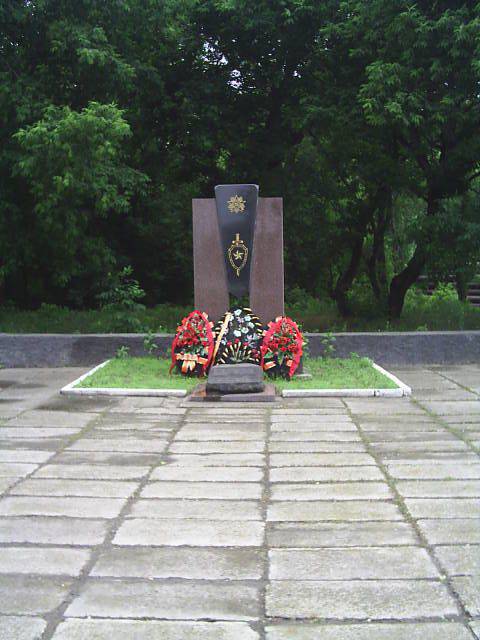 In memory of the heroic defense of the Green Island on its territory, sixty meters from the pontoon ferry, a memorial to the soldiers of the 230 regiment of the NKVD convoy troops of the USSR was installed. The inscription on it reads: ““ Here on the Green Island 21-29 on November 1941, the soldiers of the 230 Infantry Regiment of the NKVD troops fought, holding a bridgehead for attacking the Nazi invaders during the liberation of Rostov-on-Don in 1941. ETERNAL MEMORY OF SOLDIERS OF OTHER COUNTRY! ”. For a long time there are no survivors in those heroic events. The warriors of the regiment, who were fortunate enough to survive on Green Island and go through the whole war, lived worthy lives and left for another world, leaving us with the memory of their immortal feat.
In memory of the heroic defense of the Green Island on its territory, sixty meters from the pontoon ferry, a memorial to the soldiers of the 230 regiment of the NKVD convoy troops of the USSR was installed. The inscription on it reads: ““ Here on the Green Island 21-29 on November 1941, the soldiers of the 230 Infantry Regiment of the NKVD troops fought, holding a bridgehead for attacking the Nazi invaders during the liberation of Rostov-on-Don in 1941. ETERNAL MEMORY OF SOLDIERS OF OTHER COUNTRY! ”. For a long time there are no survivors in those heroic events. The warriors of the regiment, who were fortunate enough to survive on Green Island and go through the whole war, lived worthy lives and left for another world, leaving us with the memory of their immortal feat. Unfortunately, the impressive feat of the warriors - the security officers is not sufficiently appreciated in our time. Most likely, the general negative attitude towards the troops of the NKVD, fueled by anti-Soviet historians and publicists, played a role. Meanwhile, it was the warriors, the Chekists, who played the most important role in the defense of Rostov and showed themselves to be truly brave and trained soldiers. In addition to the 230 of the convoy regiment, other units of the NKVD troops - the 85 and 89 rifle battalions of the 19 rifle division of the USSR NKVD for the protection of important industrial enterprises participated in the defense of Rostov-on-Don (the division was deployed on the basis of 71 brigade of the NKVD troops). The personnel of the battalions defended the buildings of the regional and city committees of the party, the regional administration of the NKVD of the USSR, the post office of Rostov-on-Don. The soldiers and officers of both battalions fought heroically, not for life, but for death. Not a single soldier of the 85 and 89 battalions of the NKVD troops came out of the fierce fighting in the defense of Rostov. All nine hundred personnel of both divisions died a brave death, defending Rostov-on-Don.
Unfortunately, in Rostov-on-Don there are few streets named after the heroes of the 230-th convoy regiment. In this regard, the heroic division of the NKVD troops was much less fortunate than the equally brave Rostov rifle regiment of the national militia. In the seventieth anniversary of the Great Victory, it would be worth remembering the immortal feat of the servicemen of the regiment and other units of the NKVD troops defending and liberating Rostov-on-Don in November 1941 of the year, and taking measures to perpetuate their memory. After all, the last veterans of the Great Patriotic War will soon completely leave, and only their history will remind of their heroism to the younger generations. A story that can be materialized in the names of streets and squares, in memorials in parks and squares, in school museums, in books, newspapers and electronic publications.
When writing the article, photographic materials were used from the sites http://mius-front.livejournal.com/, http://rslovar.com/, from the personal archive of the author of the article.
Information